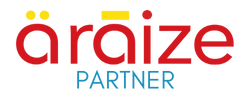Artificial intelligence (AI) is now embedded into our daily lives in ways we couldn’t have imagined years ago. This includes the workplace. CPAs have discovered new and innovative uses for AI. While some of these applications require a bit more programming skills than the average accountant possesses, they do highlight the many creative ways in which AI can improve workflows and efficiencies for accountants.
Drafting Technical Accounting Memos
Does your department draft memos? AI can do it for you with the right preparation. Using an internal, paid version of an AI tool such as Microsoft Copilot, you can “train” the AI to write memos for you based on previous memos. The key is to ensure that the files you use to train the AI provide best practices. As the AI scans the internal memos, it will use them to develop its own language model and formatting style for future memos. With the right prompts and commands and clean, organized files to train the bot, accountants can use AI to generate new memos. Once the AI platform generates the memo, “humans in the loop” should review the final output for accuracy. AI can, and does, make mistakes, so the last step of a person reviewing the AI output is critical.
One important item to note: Do not try this with “free” or publicly available AI models. Use only proprietary, paid, internal AI tools to train your AI models. Remember that anything scanned by public AI models, like the freely available Copilot and ChatGPT, becomes part of their repository forever, so anything confidential or proprietary should not be used with public models. Private AI models, such as those paid for and installed locally by your IT team, keep the information contained within and used only by your organization.
Faster Code Generation
Even with the best nonprofit accounting software, there may come a time when you need to output data to spreadsheets and use various functions to calculate different things. That’s where AI can come in handy. Many accountants are using AI to develop formulas to use within spreadsheets. Rather than looking them up or tinkering with them, accountants are simply asking AI platforms to help them develop code to run their calculations. AI is good at coding, and many find that code generation is a great time saver.
Research Tasks
AI platforms excel at analyzing vast amounts of data, including searching the web. They are terrific at performing research tasks. This includes market research, accounting research, and more.
One tip: share your own thoughts with the AI platform, then ask it, “What would you add to this, and why?” It’s important to note that while AI does perform good research functions, it can still make mistakes. These “hallucinations” provide incorrect answers. So, take AI-based research with a grain of salt, and read through it carefully. Confirm or double-check sources, especially data that you plan to cite in a report.
Marketing Support
A fourth area that AI can support is marketing. Whether it’s donor outreach, membership drives, or finding new grants, AI platforms offer everything from drafting social media copy to developing ideal donor profiles.
As with other forms of research produced by AI platforms, the last stop for anything generated by AI should be a human being. People can read through text generated by AI and spot inaccuracies, cliches, and odd phrases that just don’t sound right. AI isn’t perfect, and the “human in the loop” is essential to using the tool effectively but not leaning on it as a crutch.
Welter Consulting
Welter Consulting bridges people and technology together for effective solutions for nonprofit organizations. We offer software and services that can help you with your accounting needs. Please contact us for more information.








Recent Comments